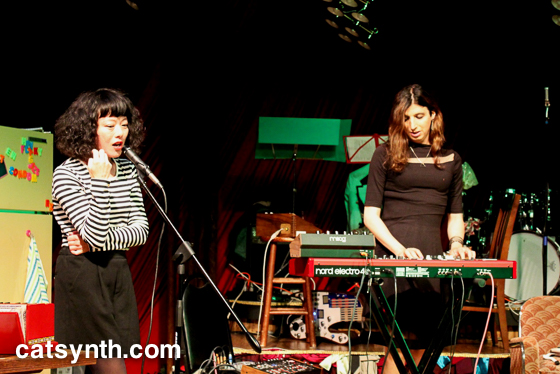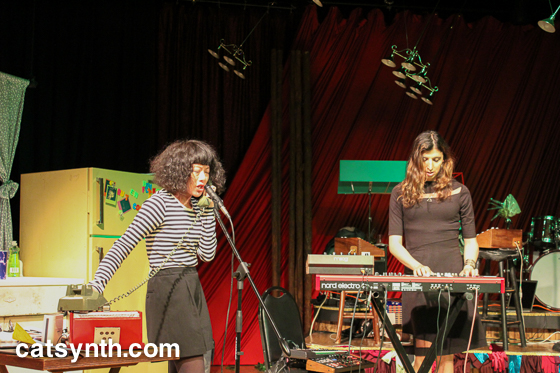This past September, the San Francisco Symphony celebrated the 80th birthday of composer Steve Reich with a week of performances, culminating in an all-Reich program on Sunday, September 11.

[Steve Reich. Photo by Jeffrey Herman. Courtesy of the San Francisco Symphony.]
The diverse program features a variety of works from his oeuvre. It began with Six Marimbas, a piece originally scored and titled in 1973 Six Pianos. It has the classic Reich sound of repeated but slowly evolving patterns that form a continuously moving harmony throughout the piece. I thought it was particularly well suited to the marimbas, which provide a percussive texture for the lines and a lightness for the harmony. I have not heard the original for pianos, but I can imagine it was a bit heavier.
Six Marimbas was followed by Electronic Counterpoint, featuring Derek Johnson on guitar. In addition to Johnson’s live performance, the piece includes multiple pre-recorded lines to form the counterpoint texture. It is also broken up into movements and involves the development of melodic and harmonic themes that give it a more traditional quality despite the unusual orchestration.
After the intermission, Steve Reich joined Michael Tilson Thomas (aka “MTT”) for an impromptu performance of Clapping Music. This is a fun piece, and it was great to see him perform it. In some ways, this piece formed the center of the “celebration” aspect of the concert, with a long ovation following the performance.
The formal program resumed with Different Trains, performed by the Kronos Quartet with pre-recorded voices. This is a much heavier piece. It combines the sounds of trains with the live quartet and vocal recordings. It starts somewhat nostalgic with reminiscing of train trips across the United States, including New York and Los Angeles, but takes a darker turn as the voices and sounds turn to memories of the trains carrying Jews to the concentration camps during the Holocaust. It then returns to the U.S. in the final movement but with the awareness that the memories of train rides have starkly different meanings depending on time and place.
Interestingly, the original program featured WTC 9/11, a powerful piece that would have had additional resonance and symbolism coming on the fifteenth anniversary of the 9/11 attacks. It was replaced by Different Trains – both pieces were originally written for and performed by the Kronos Quartet. There wasn’t any official mention of why the switch occurred. WTC 9/11 is a dark and difficult piece, even more so than Different Trains, and perhaps it was felt the anniversary was a distraction from the celebration of Reich’s full life and work.
The final piece of the evening was Reich’s Double Sextet, a piece that features two identical sextets – flute, clarinet, violin, piano, vibraphone, and cello. For this entirely live version, members of the SF Symphony were joined by Eighth Blackbird. The two groups formed the dueling sextets that played similar but different parts that proceeded a variety of interlocking rhythms and harmonies. The mixed instrumentation also gave it a more complex timbre than Six Marimbas (which sounded like a single instrument). It was also a more recent piece, composed in 2008, using the contrapuntal techniques he had developed in the earlier works.
I am glad that we were able to attend and be part of this event. I had studied Steve Reich as a composer and music student, and heard some of these pieces before, but not in a single unified symphonic setting. It was a fitting tribute.










 Possibilities is Herbie Hancock’s autobiography released in late 2014, not long after I saw him accept his lifetime achievement award at the SFJAZZ gala. Like the gala event, the book attempts to weave together the earlier (and in my opinion best) work with his continuing to be vital and creative artist. It didn’t change my over all assessment of his music – I revere what he did in the 1970s with The Headhunters and Mwandishi as close to musical perfection, but shrug at what most of what he did in the 1980s through the end of the century (with notable exceptions like Rockit).
Possibilities is Herbie Hancock’s autobiography released in late 2014, not long after I saw him accept his lifetime achievement award at the SFJAZZ gala. Like the gala event, the book attempts to weave together the earlier (and in my opinion best) work with his continuing to be vital and creative artist. It didn’t change my over all assessment of his music – I revere what he did in the 1970s with The Headhunters and Mwandishi as close to musical perfection, but shrug at what most of what he did in the 1980s through the end of the century (with notable exceptions like Rockit).

































